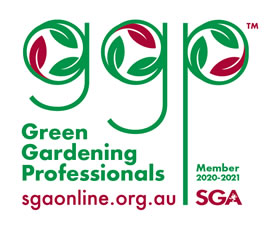| item(s), Total: $0.00 View Cart |
| Shopping cart is empty. |
INDOOR PLANTS
There are proven benefits of indoor plants for air quality, stress reduction and mental health. A recent study claims that one indoor plant in a medium sized room (4m x 5m) can improve air quality by 25%! While this statistic can vary hugely on so many factors - there is also some evidence that shows soil micro-organisms play a part in removing VOC's (volatile organic compounds - airborne pollutants) from our homes and offices.
While plant species behave differently in this regard, the usual belief is that the larger a leaf's surface, the more effective at air cleaning the plant will be. Several years ago now, NASA were looking at plants' abilities to purify air (looking at their potential in confined environments like the International Space Station, etc). Their comparison of a number of indoor plants can be found here. (And it's a good checklist of suitable plants to take plant shopping, too!)
Choosing an Indoor Plant
While there isn't technically a true "indoor plant" (given that all plants originated outdoors somewhere) - there are some plants that will survive and thrive if you look after them well in "artificial conditions" inside buildings.
Sometimes, plant sellers can be sneaky - I have seen many plants advertised as 'indoor plants' that would be a dicey choice, even for experienced gardeners. Visit a specialist nursery or indoor plant retailer and ask their advice. If you're a beginner, stick to some of the more reliable choices (there's some lovely easy care options!) and get to know how to care for them before levelling up. The bonus is the more easy care and 'common' plants are usually cheaper, too - and they still look awesome in a good pot with the right placement in your home.
CARE TIPS FOR INDOOR PLANTS
1. LIGHT
The biggest issue with indoor plants is the availability of light - given that most indoor positions don't provide enough for photosynthesis. Naturally, understory plants and slower growing plants can survive with less light.
Other understory plants like some ferns (those originating from tropical areas) do well in a humid environment like a bathroom. Windows often are frosted glass so the light is diffused but adequate for plants to thrive assuming their basic needs are met.
2. WATER
The trick to many indoor plants is getting the watering right. Many times indoor plants are killed through OVER watering (rather than under watering). Always check the soil moisture before watering. Your finger makes an awesome water meter! Poke it at least 2-3cms below the surface and if it feels damp - you don't need to water your plant.
Indoor plants aren't exposed to sunlight or temperature extremes like their outdoor relatives; so transpiration/evaporation can be much less. Contrary to what you'd expect - sometimes indoor plants need MORE water in winter than summer - our artificial heating tends to dry out the air faster.
Keeping up air humidity around our plants can be simple. You can spray them every couple of days with a misting bottle, or another tip is to get a small-ish jar or decorative glass, fill it with shells or fairy stones (or something pretty!) and then top it up with water. Tuck this somewhere around your plants and top up the water from time to time. Bathrooms usually have high humidity so can be a good choice for tropical plants.
Depending on where the plant originated (as usual - do a bit of research!) - you'll get a clue as to how much moisture it requires. Some plants like Dracaena and Sansevieria definitely don't like wet feet and prefer to dry out a little between waterings.
Self watering pots are a good idea if you tend to be a bit heavy handed with the watering. Keep the reservoir topped up, but (once established) allow the plant to drink as it needs to. The best kind have a little window - and they really do take the guess work out of knowing how much your plant needs.
Never keep your indoor plants sitting in a saucer of water, as it will cause waterlogging and death of most plants. If the outside edge (leaf margins) of your plants is going soft and browning off, this is usually a sign you're over watering.
Fungus Gnats
If you notice small little flies around your indoor plants - these are fungus gnats; and they're usually another sign that soil is being kept too damp. They won't harm your plant, but are attracted to rotting organic matter in your potting soil. Allowing the surface of the pots to dry out between watering will stop them - as they breed in the top layer of damp soil. (Again - self watering pots are good for preventing this!) If you have an infestation, one of the best ways to deal with them is place a small dish of balsamic vinegar or wine near the pot plant. They will be attracted to the fermented scent and kamikaze into it. A dusting of diatomaceous earth could also be useful on the soil surface.
Avoid the temptation to slop your tea leaves or coffee grinds onto your indoor pot plants as this promotes the fungus gnats too.
If your indoor plants are looking unhealthy - first and foremost check their moisture. Don't be afraid to carefully remove the plant from the pot and inspect what's going on - that will immediately tell you whether the soil is too wet or too dry.
3. TEMPERATURE EXTREMES
Make sure your indoor plants are kept out of temperature extremes like beneath aircon vents, away from heaters, direct heat through windows, etc. A hot OR cold draft is not going to do them much good.
4. DUST
Dust is another issue with indoor plants. Accumulation of dust can clog plant leaf openings and can (in extreme cases!) affect the ability of plants to photosynthesise. Wipe down the leaves from time to time with a damp cloth (water only!) or a little eco oil to give them a bit of a shine. Another good trick is to put them out in rain showers for a short while. It will freshen up the leaves, soak the soil and perk them up! Just remember not to leave them outdoors for too long if the overnight temperatures are very cold & if the plant has been coddled somewhere sheltered indoors - the shock won't be kind to the plant.
5. INDOORS OR OUTDOORS
Many plants not considered usual for indoor plants can be given a short spell indoors (from a few days to months - depending on hardiness). You can bring in things when in flower, or your favourite succulent bowl - for a short while at least, so you get to enjoy them. Another trick is when buying certain plants - buy TWO! You can swap them over and spell them outdoors for a while; keeping them on rotation.
Just remember if you move an indoor plant outside for a "holiday" - never stick it out in the direct sun or in brutal conditions (extreme temperature days). Keep your indoor plants (when outdoors) in good indirect light - under a patio or a tree is ideal; as long as it isn't too dark.
6. PESTS
The biggest pest issue with indoor plants is usually mealy bug or scale insects. Both are best treated with eco oil, but if infestations are small you can scrape them off plants gently with your fingernail or lightly using a plastic dish scourer (not so hard that you damage the plant!). Dabbing methylated spirits onto mealy bug with a cotton bud is also highly effective (and somewhat satisfying!).
7. PETS & CHILDREN
Like any plant in your garden - some indoor plants can be toxic to children and pets if eaten. If this is a concern, do some research to make sure your plant selection is suitable for your needs.
8. SOIL
As far as potting mixes go, any good quality potting mix should be suitable (we recommend our Premium Indoor Potting Mix); just monitor it to see how much water it holds - as they will vary - and adjust your watering regime accordingly. A quality potting mix should have enough nutrition in the formulation to keep plants happy for at least 6-12 months without additional fertilising. (Indoor plants are often slower growing and that means they don't need lots of nutrients)
Re-pot indoor plants every 12-18 months to freshen up soil, upsize the pot (only if rootbound), and to trim up the foliage if needed.
9. FERTILISER
Fertilise your indoor plants sparingly and use a slow release fertiliser recommended for indoors. If giving plants a spell outdoors, a light liquid feed is a good idea (worm wizz or kelp fertiliser).Don't use smelly organic fertilisers like fish hydrolysate or manures unless you can leave them outdoors for a few days for the smell to settle. Not that the plant will mind - but you might.
10. POT SELECTION
There are so many different kinds available you're bound to find something that suits your individual taste and your home. Many decorative pots for indoors don't have drainage holes, While the benefit of this is you won't get leakage onto your furniture, the downside is you have the potential for waterlogging too. Either make sure you carefully monitor watering, use large chunks of something (rocks, large charcoal pieces - even polystyrene chunks) in a decent layer at the bottom to be something of a drainage well, or just use the decorative pot as a 'sleeve' - standing a regular pot (with drainage holes) inside it. Use an upturned pot or something similar if you need to raise the height of your plant. If you need to disguise this, some riverstones, shells, coarse coconut fibre, etc. can be used on top as a mulch to hide the plastic pot. This method makes it easy to swap over your plants too. If you use a regular pot with drainage holes, make sure your saucer is sealed (unsealed terracotta can still transfer moisture to surfaces below) and check to see that it doesn't remain full of water hours after you've watered your plants (a sign you're over watering).
Remember your indoor plants are a living thing and will respond well if given a little TLC.
Happy indoor gardening!
























